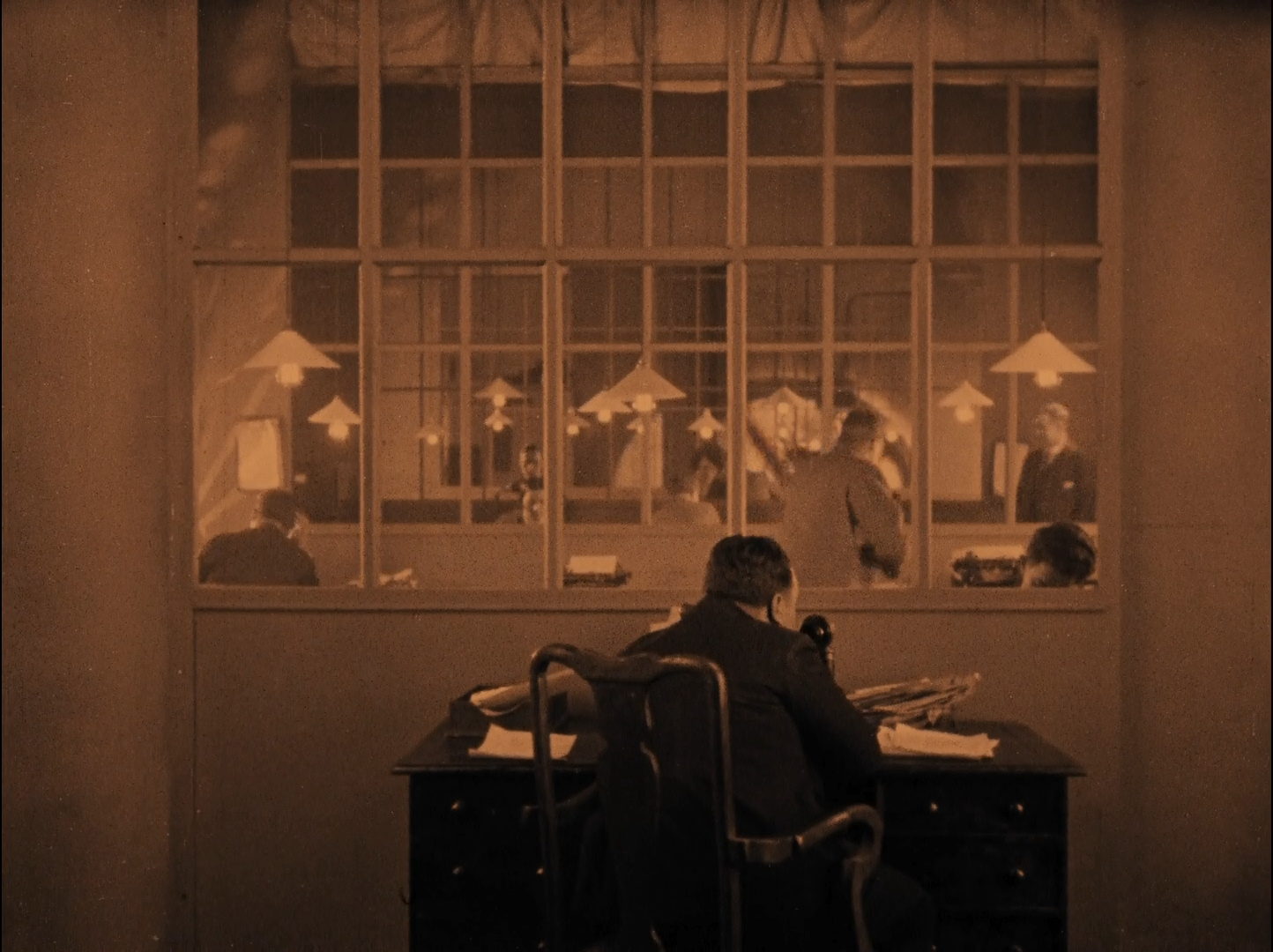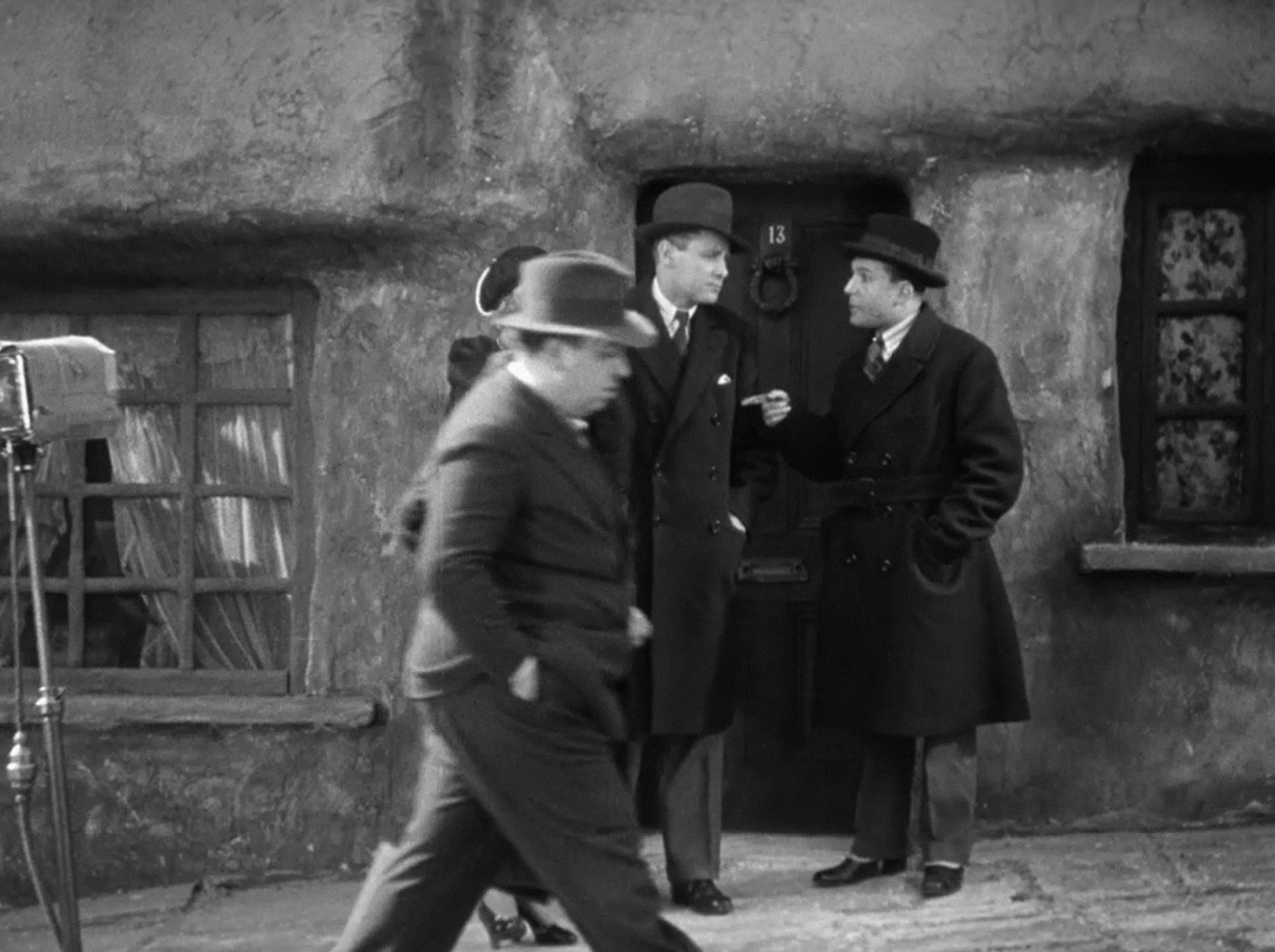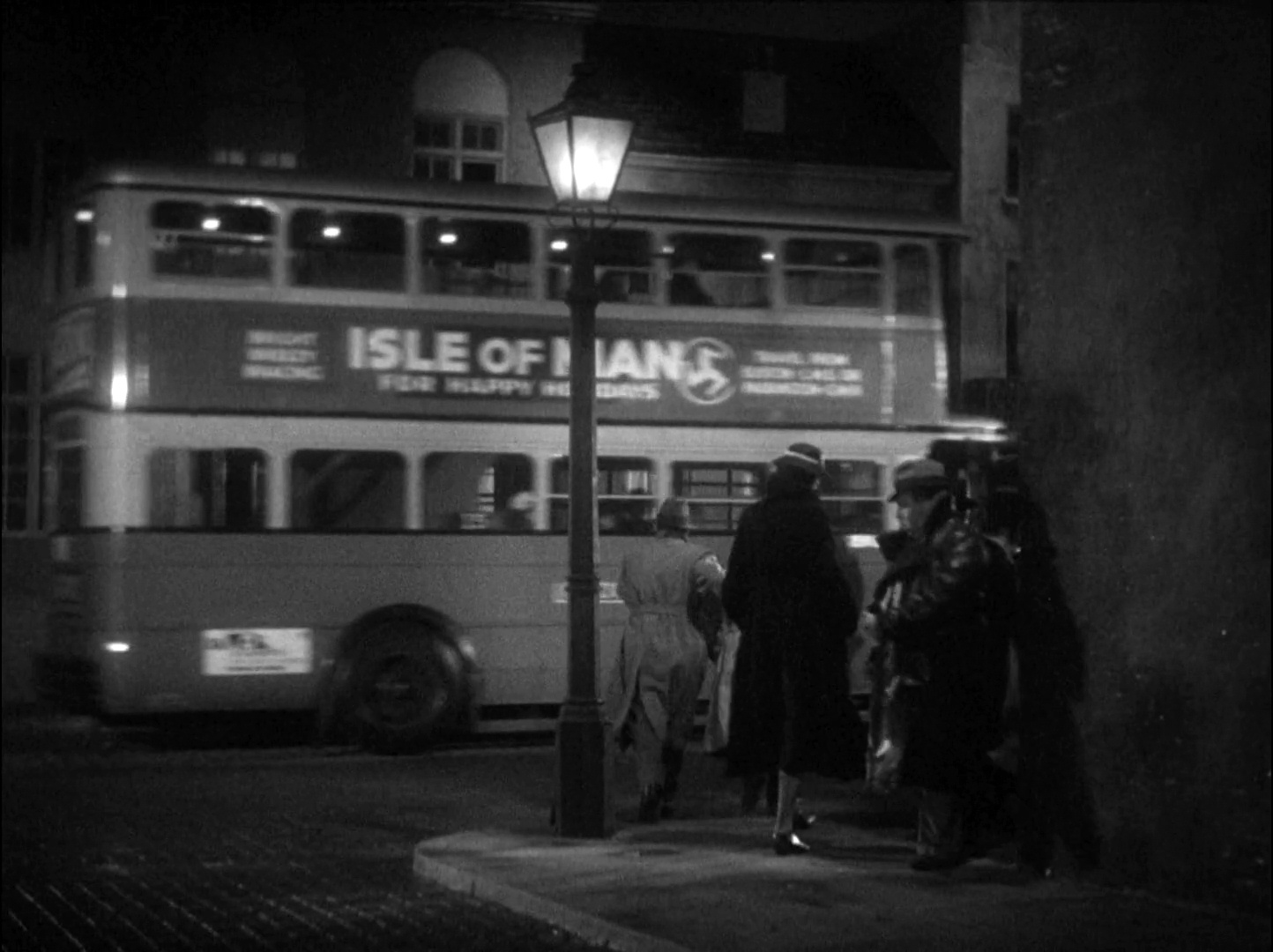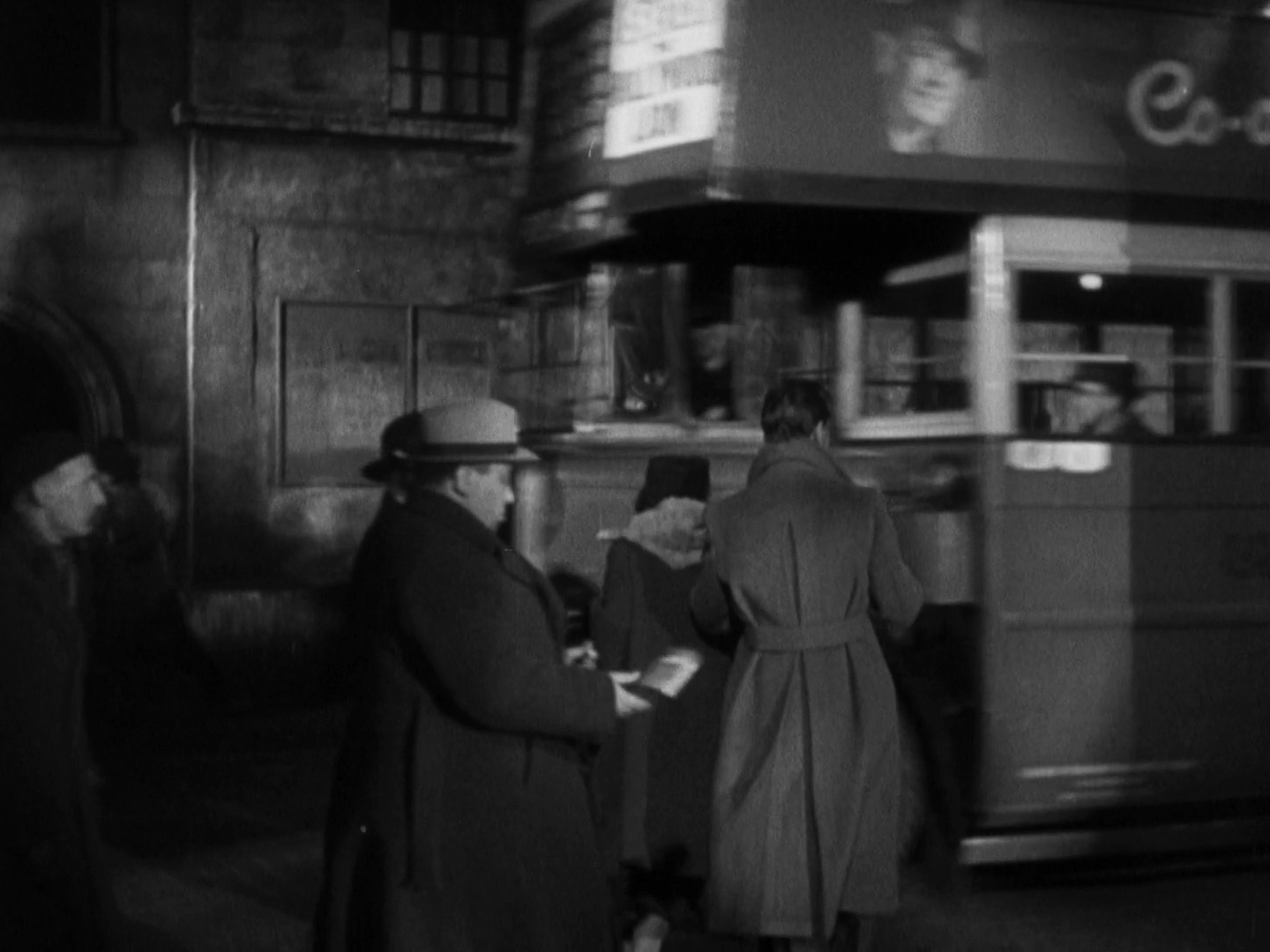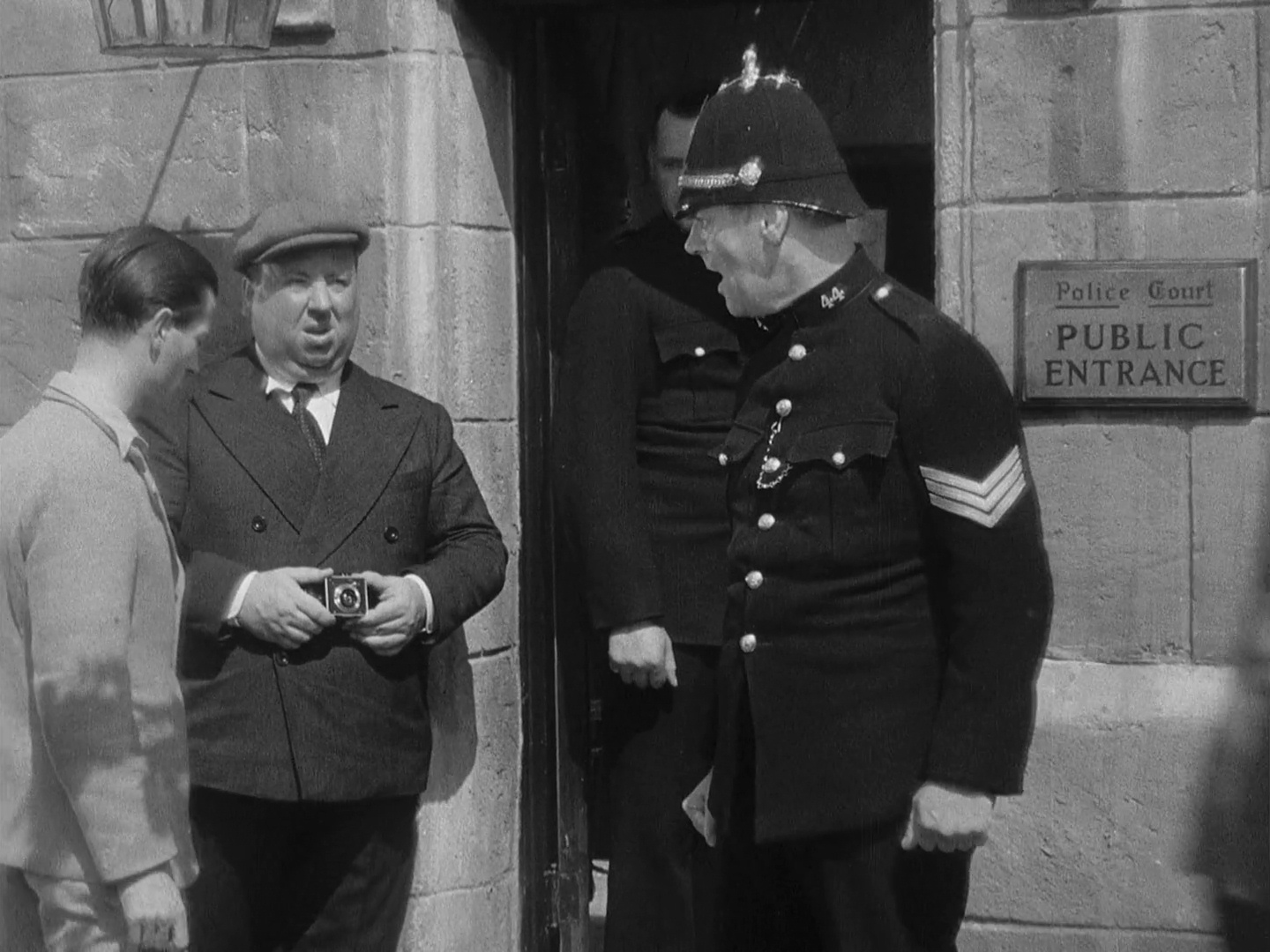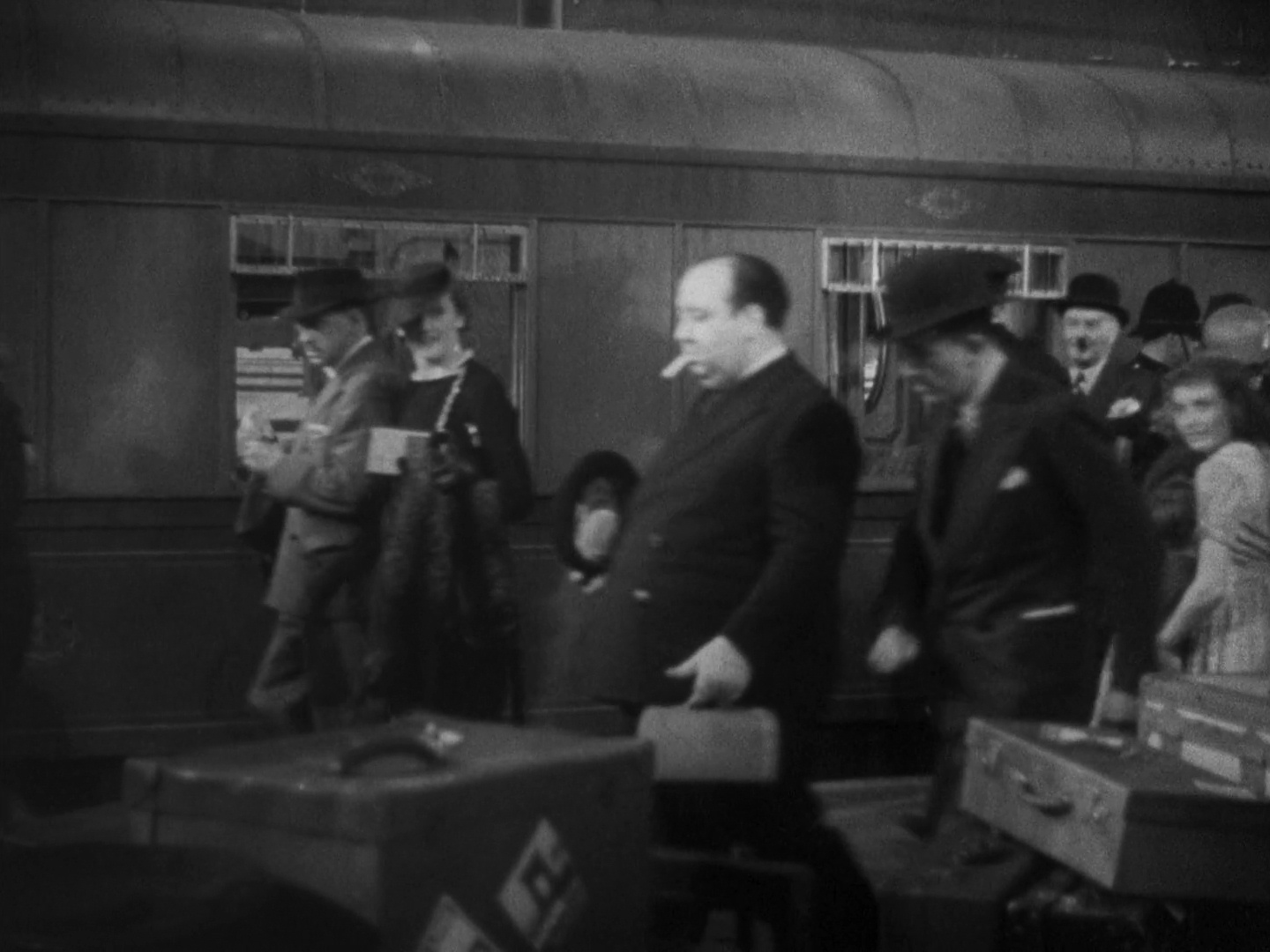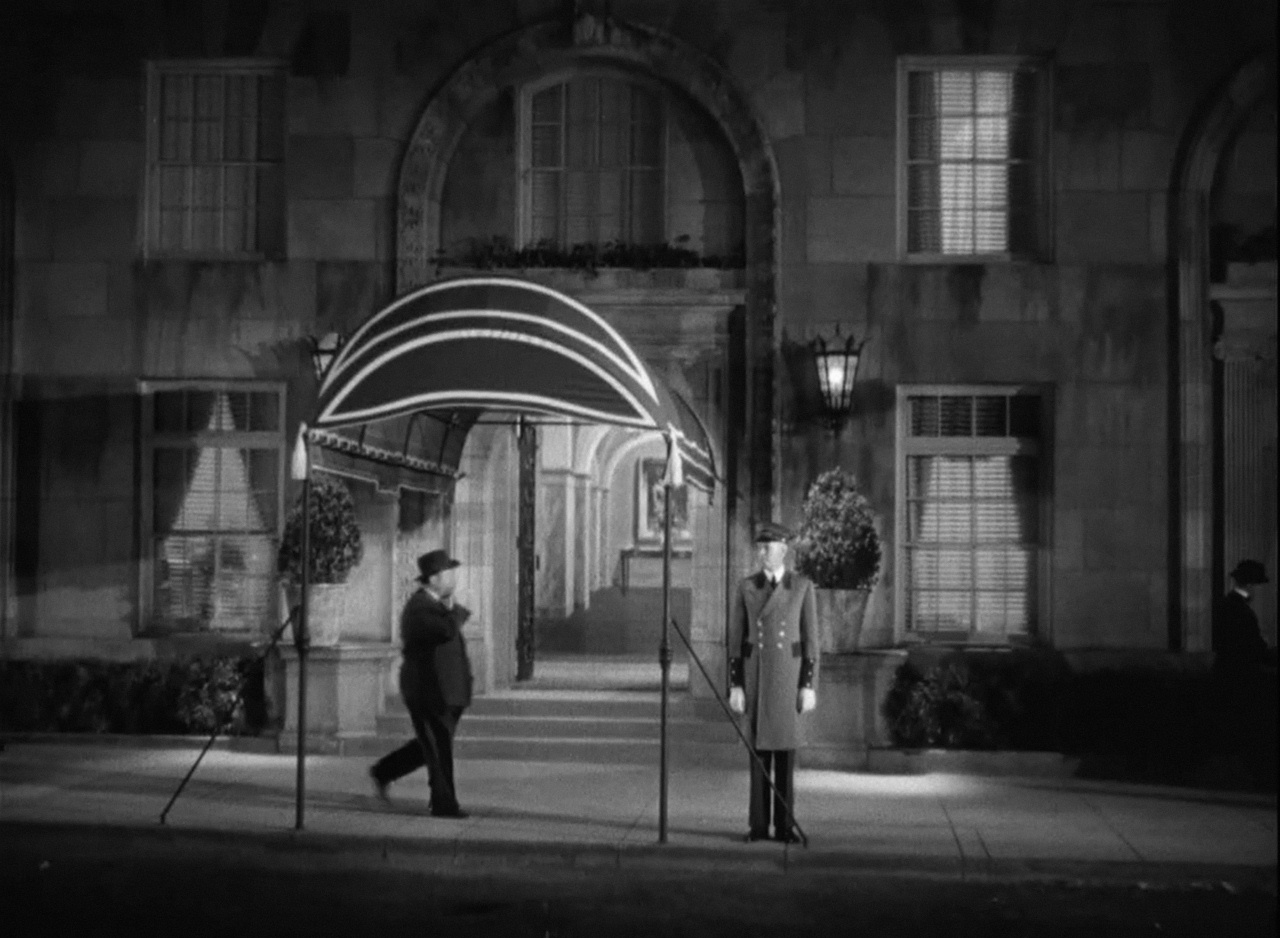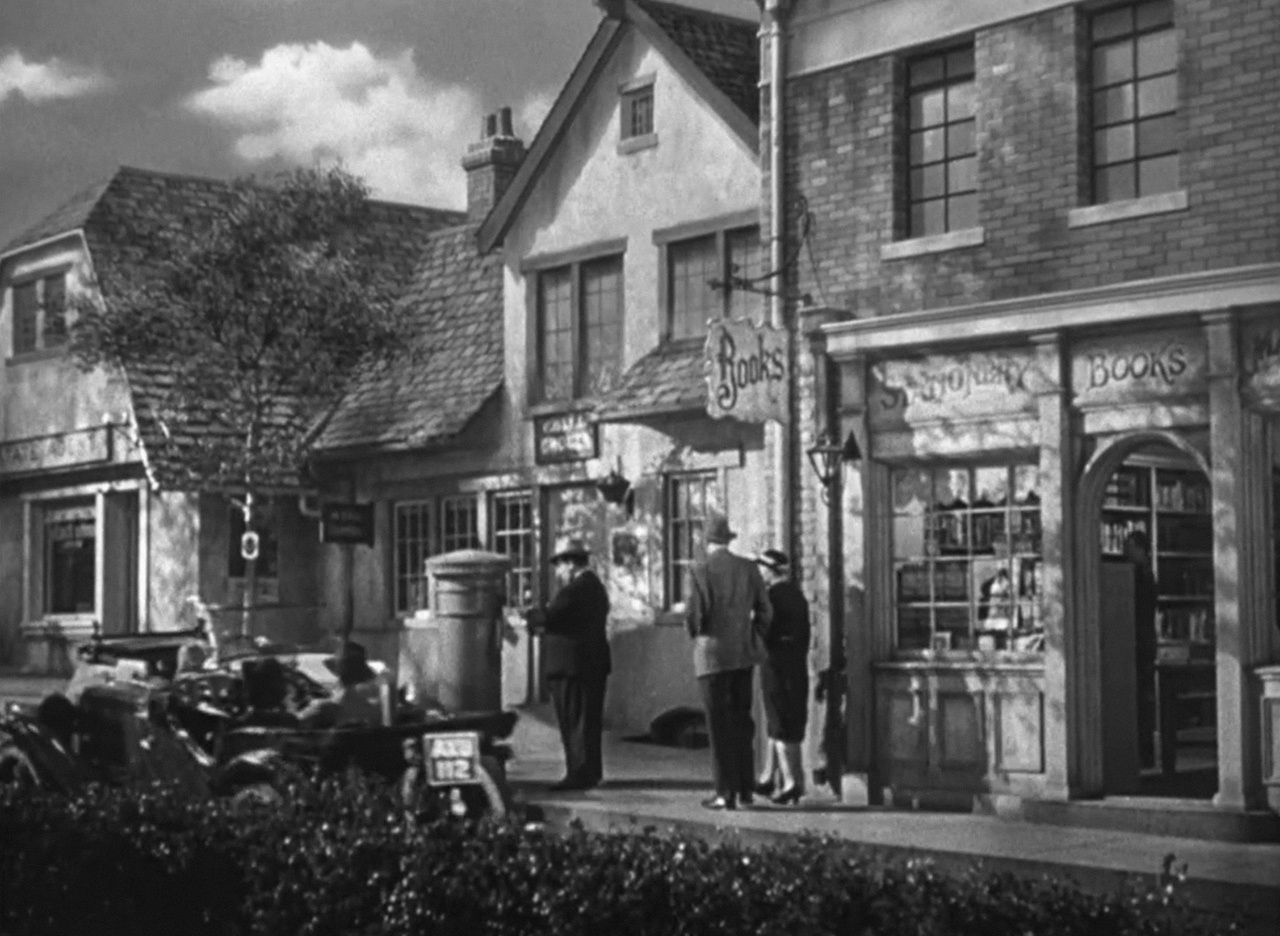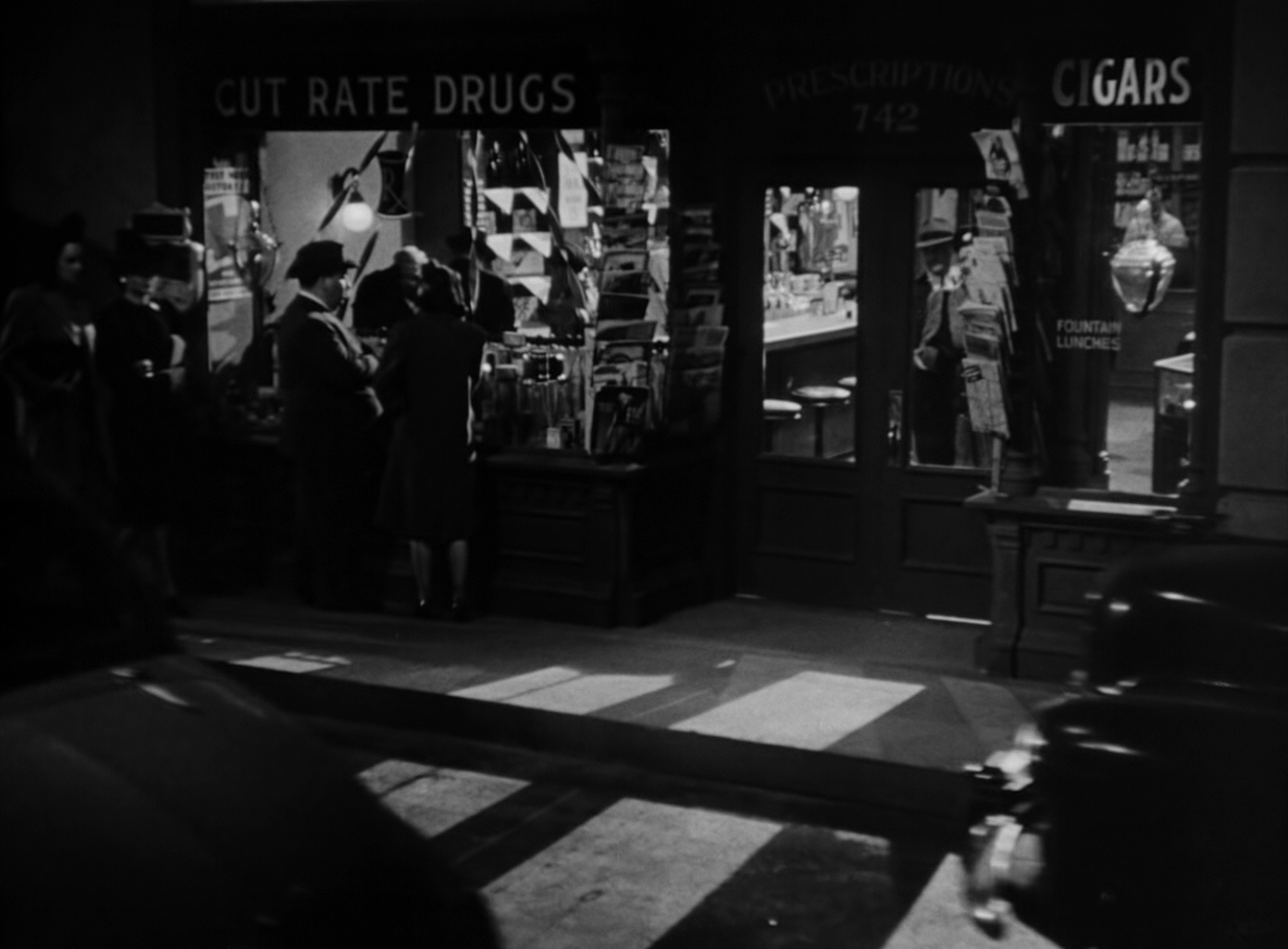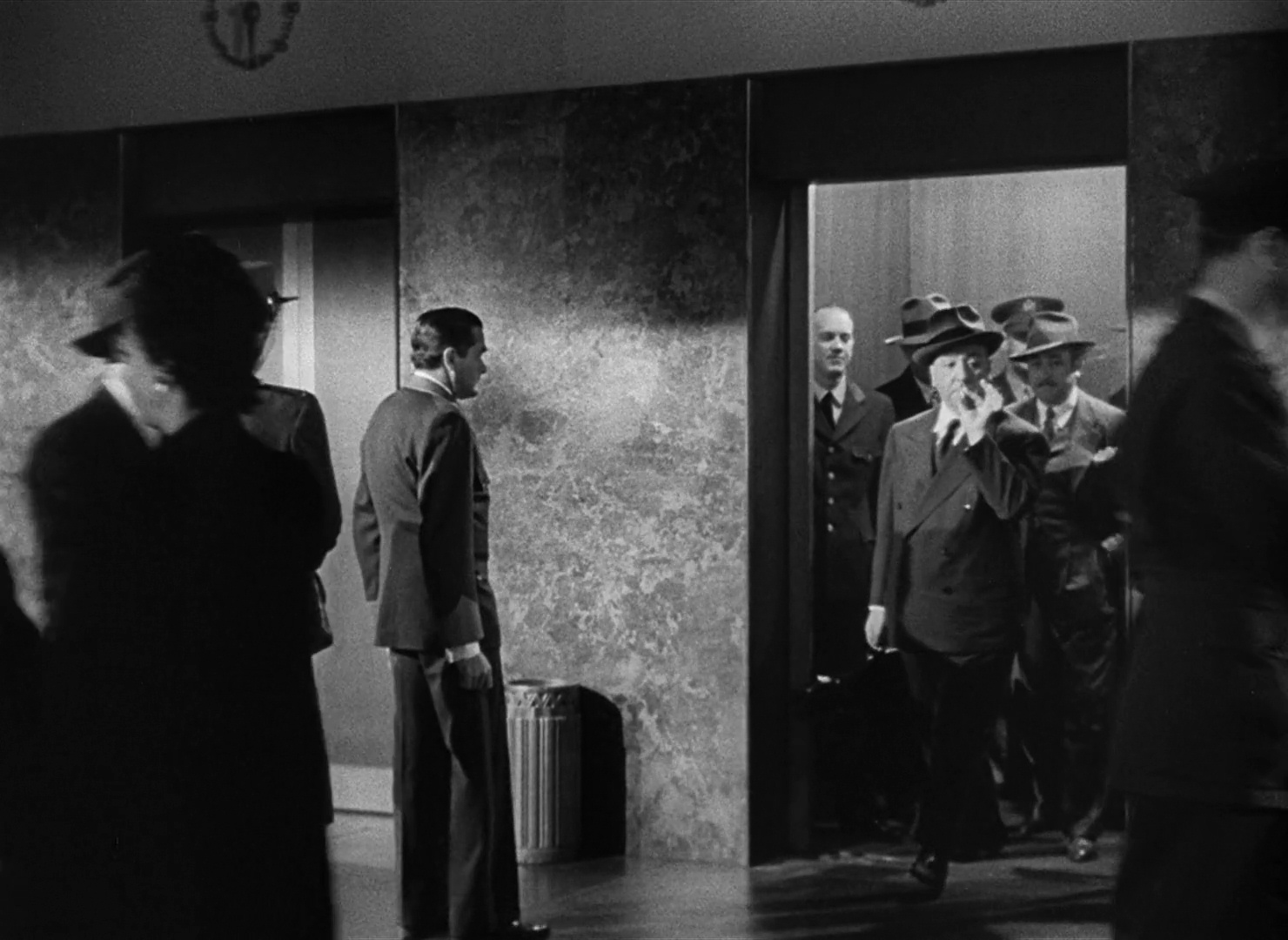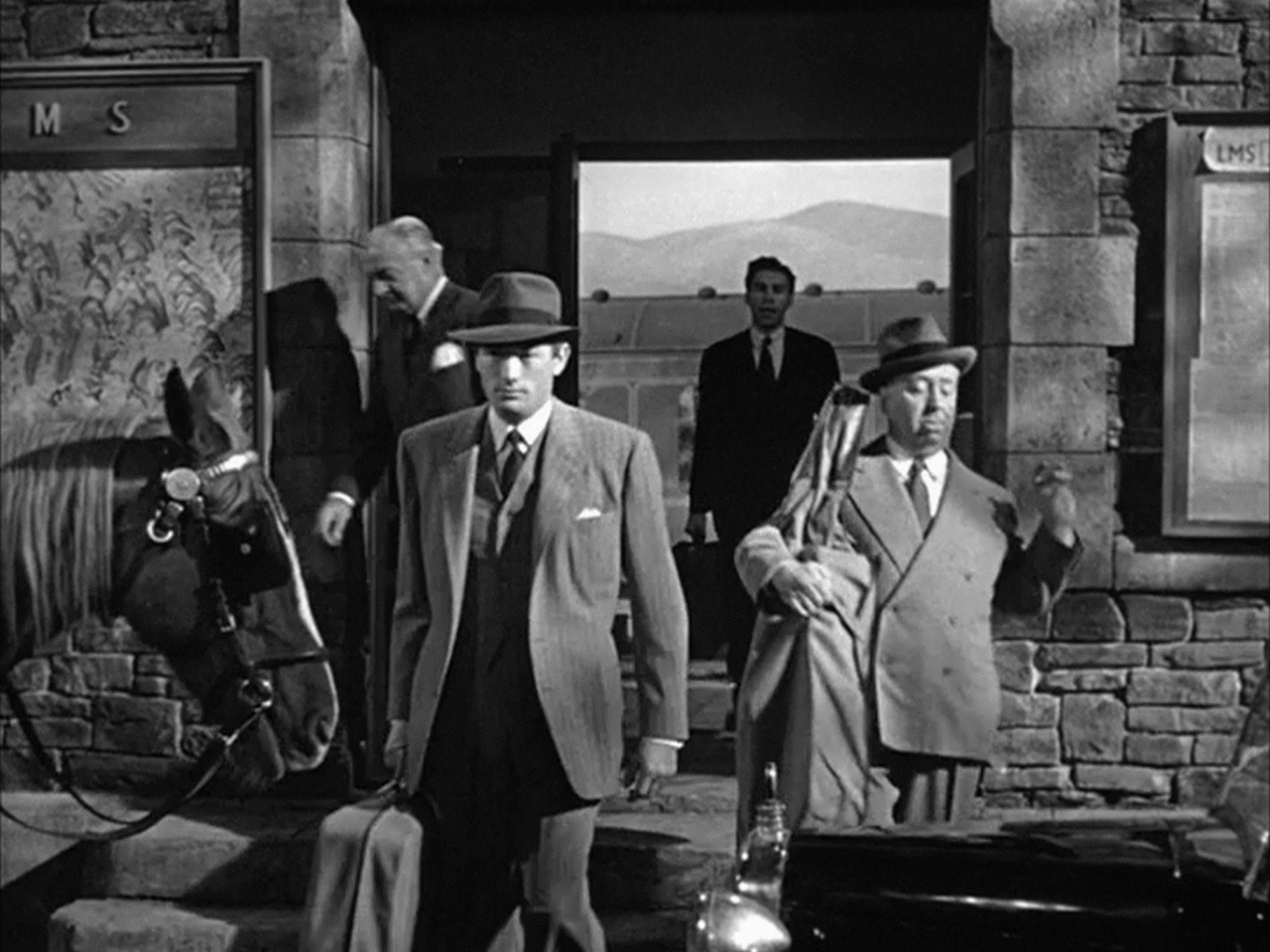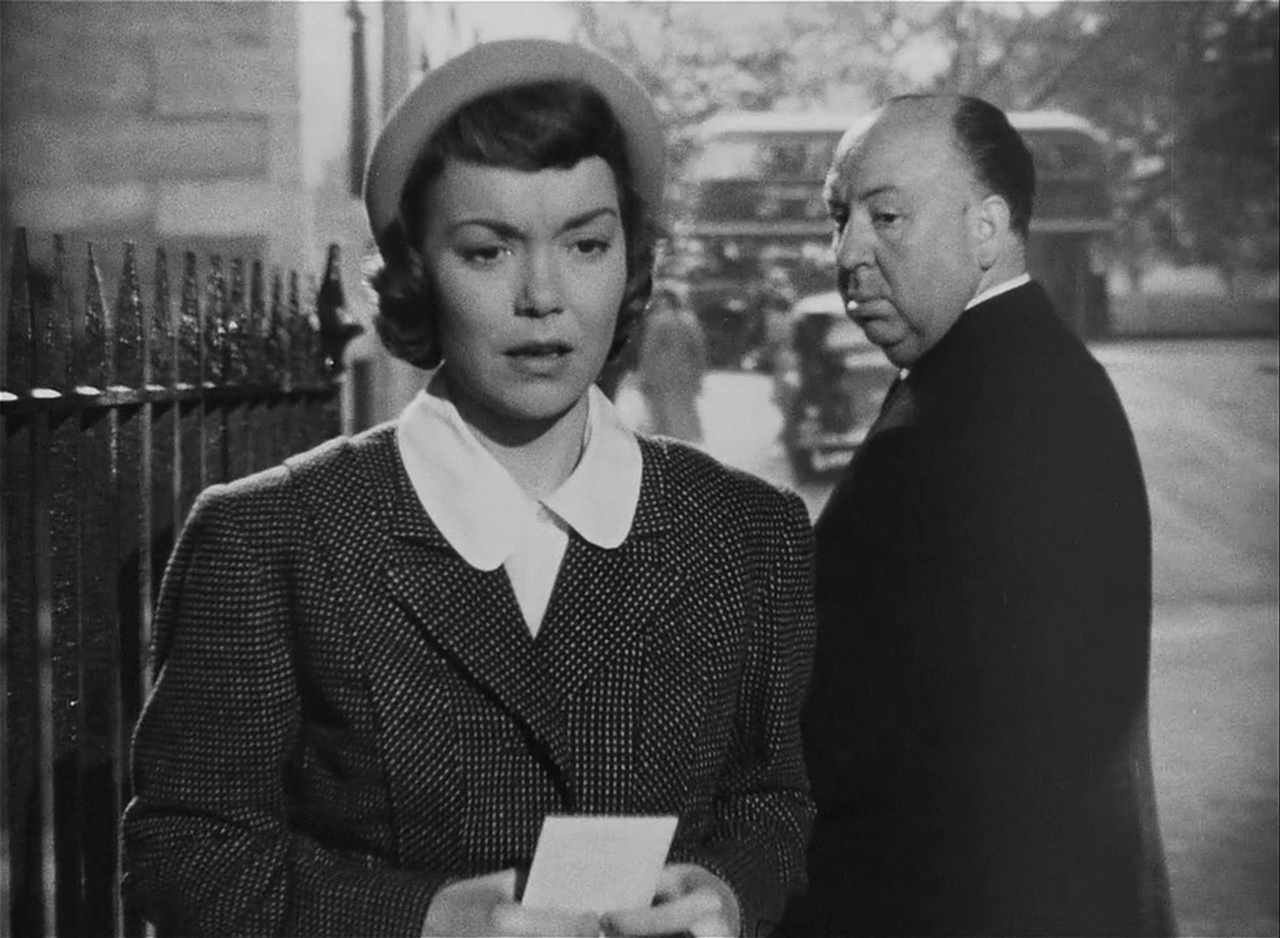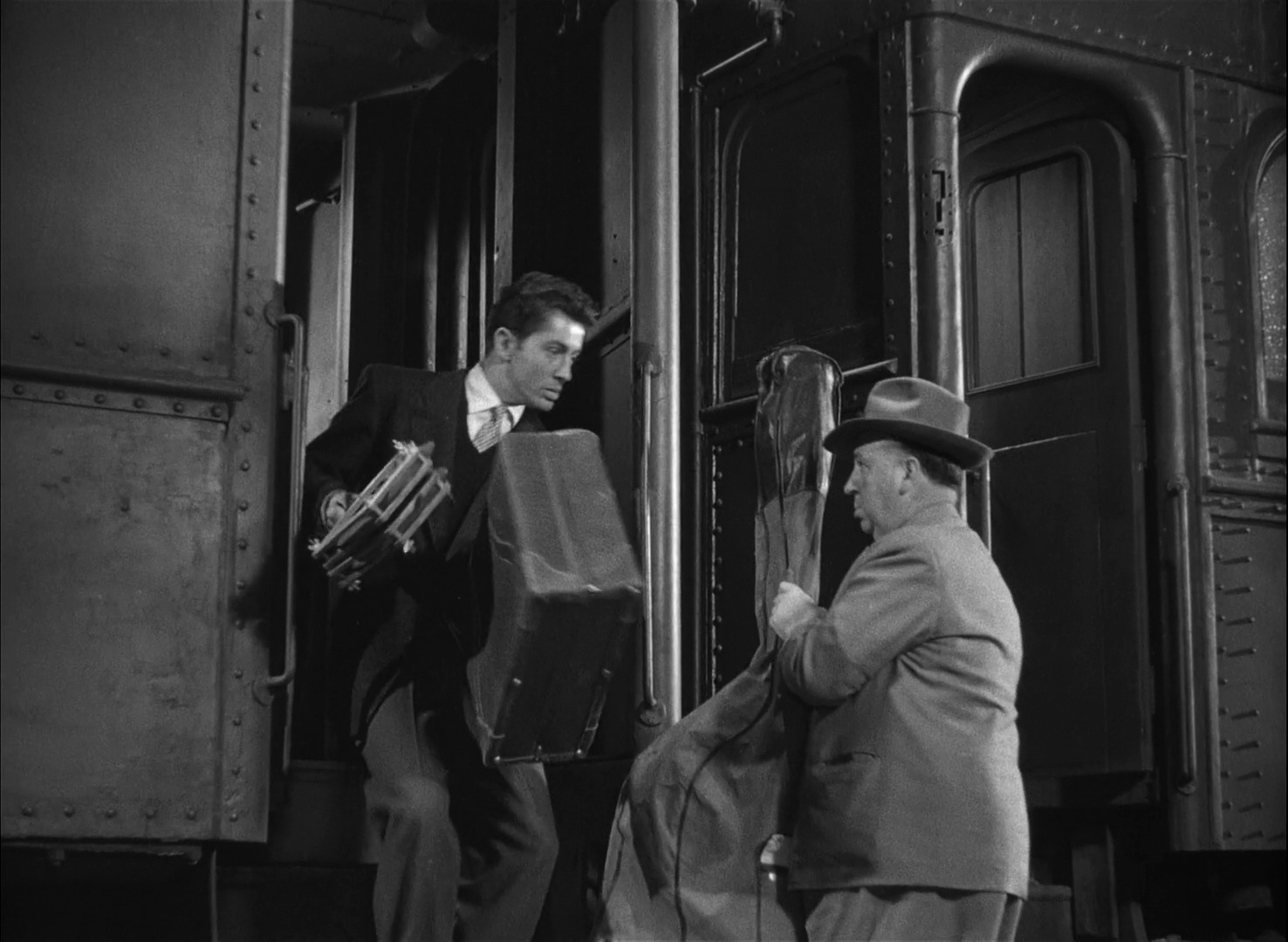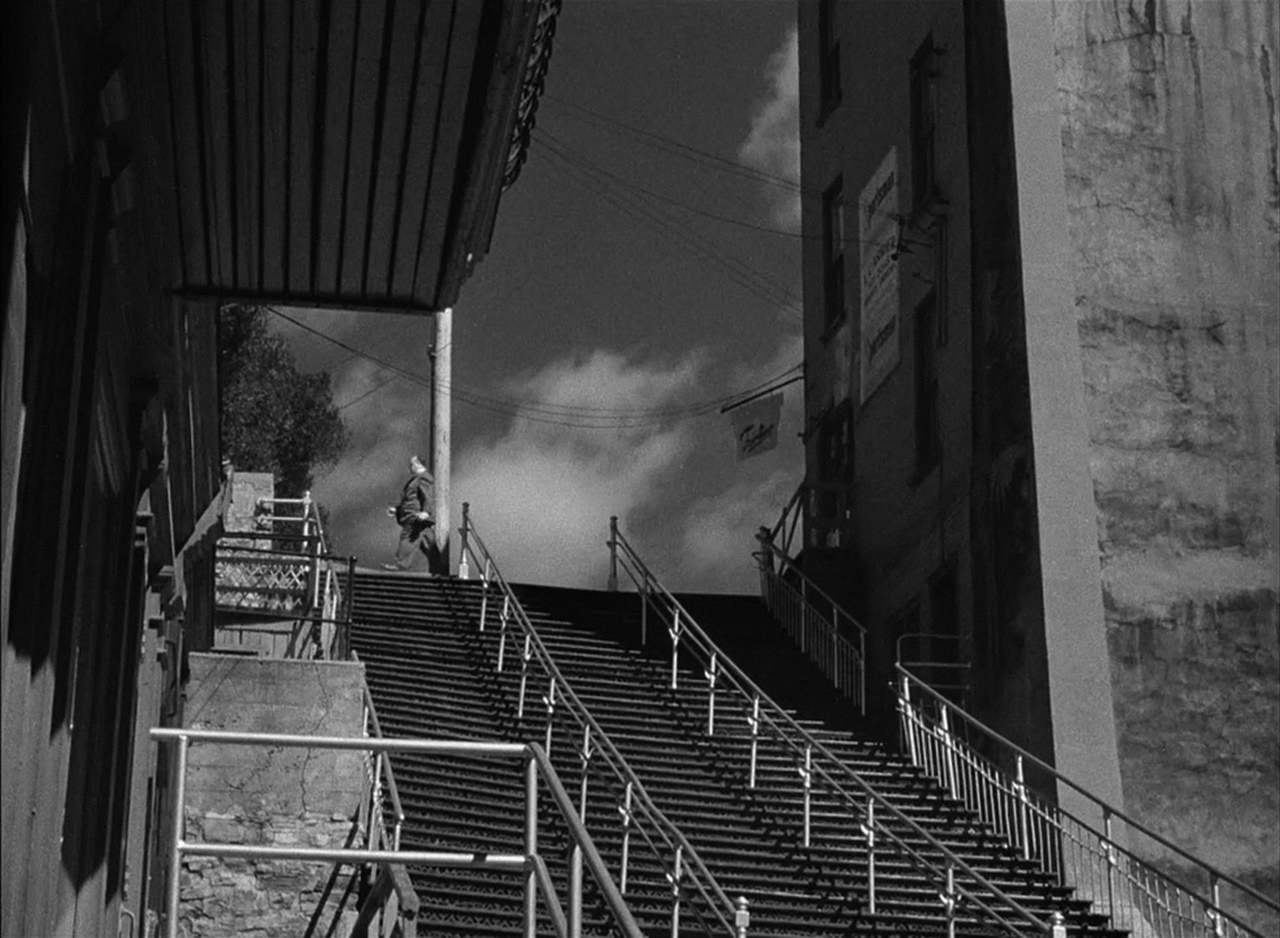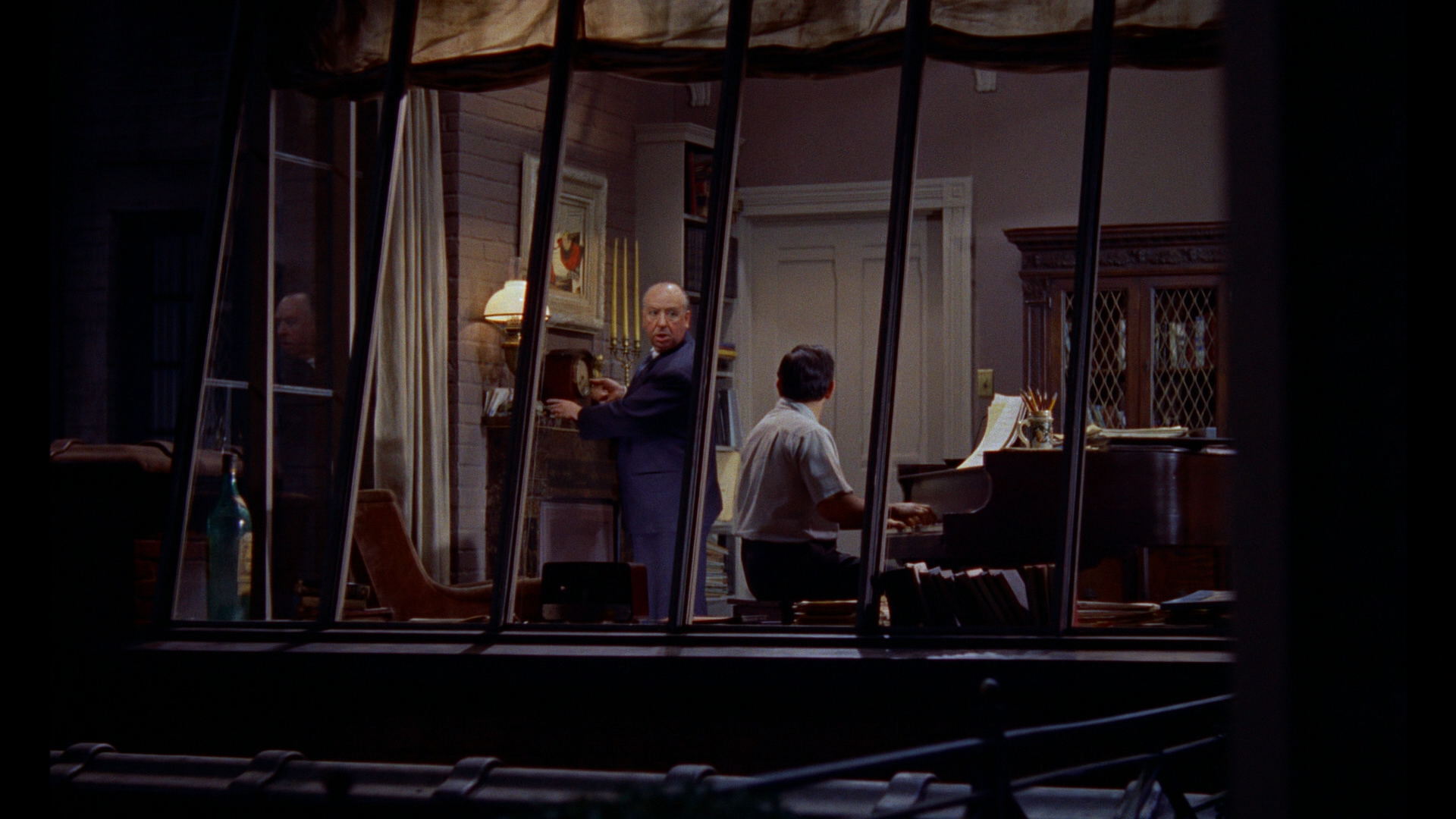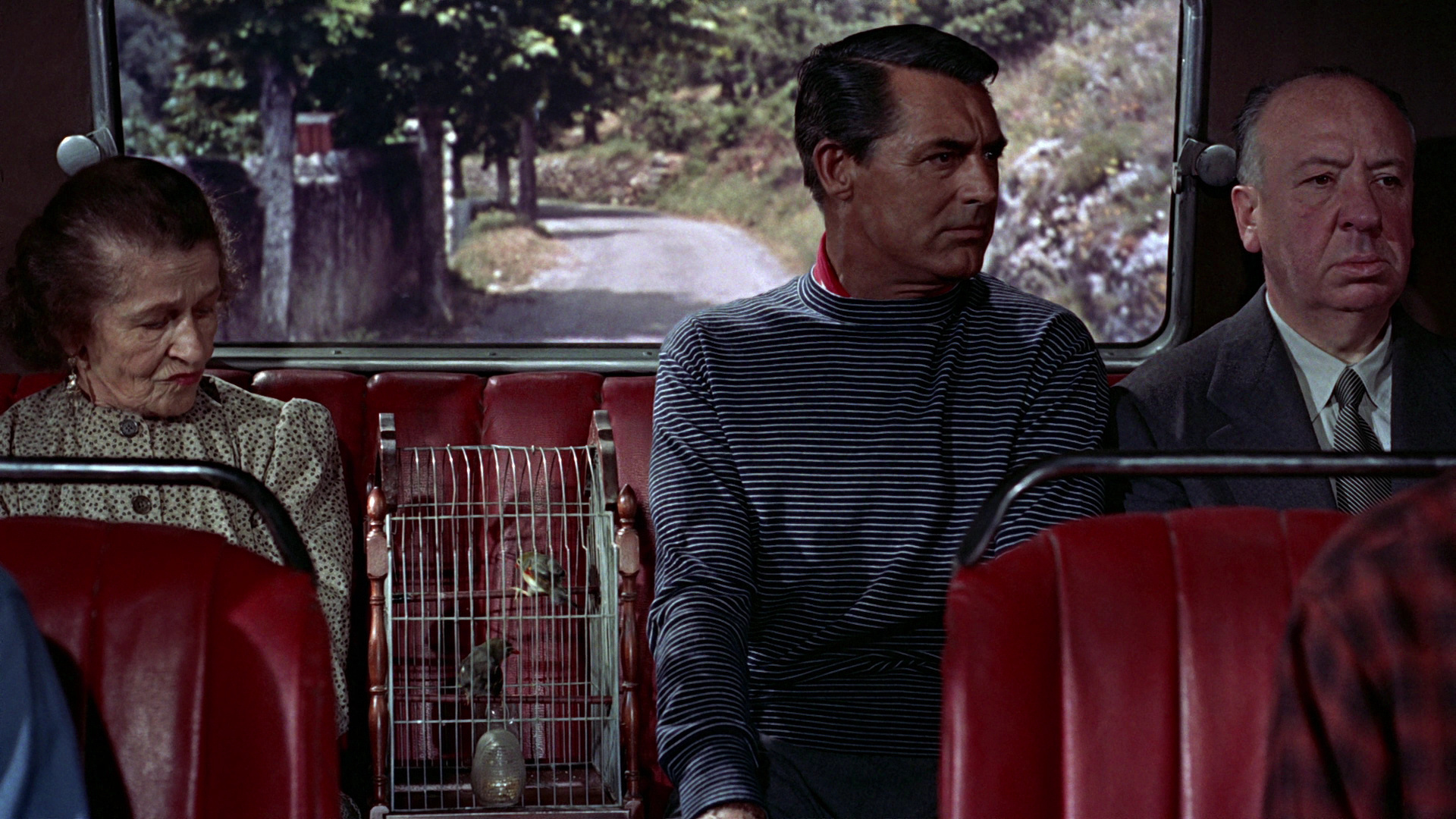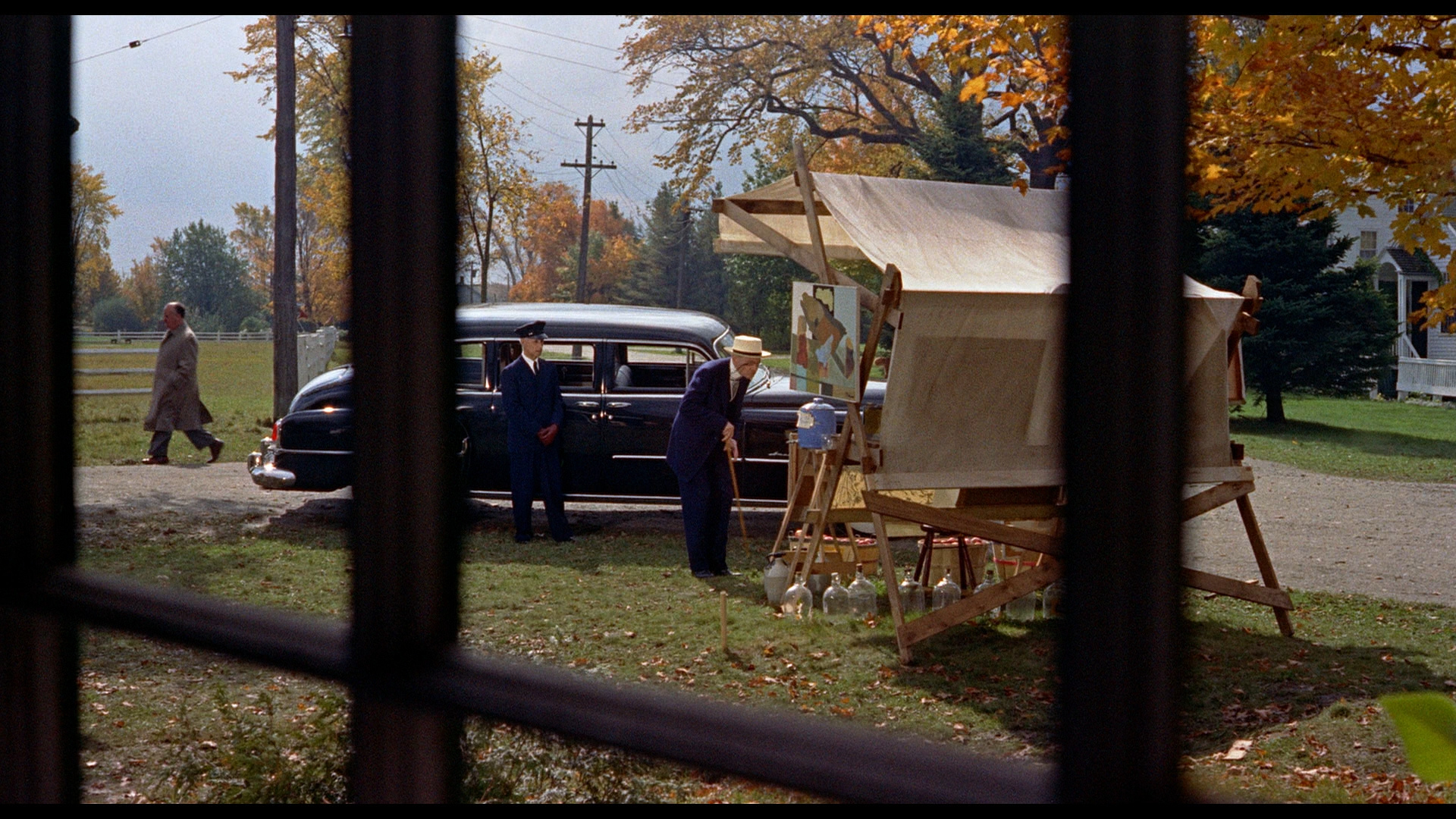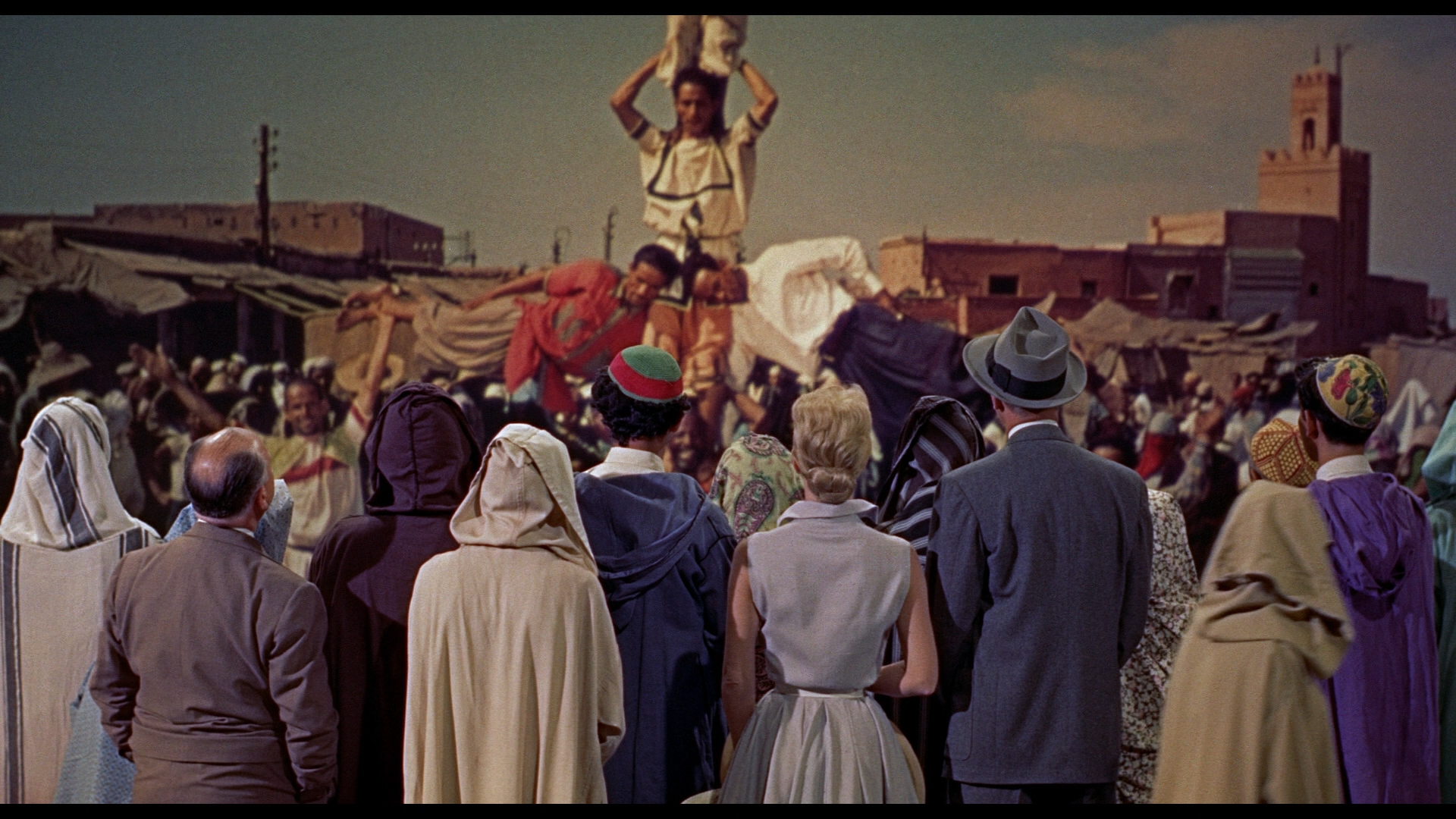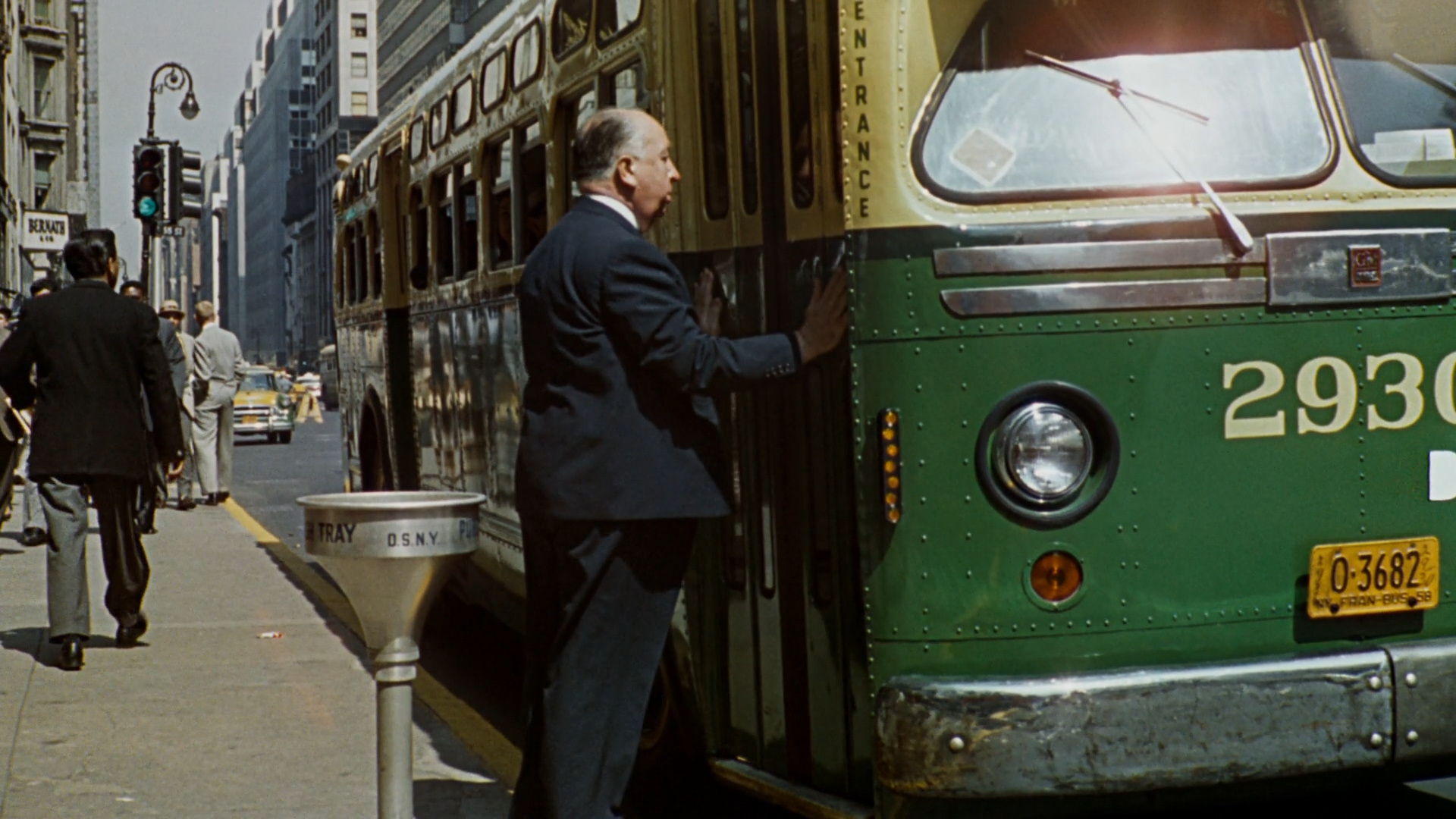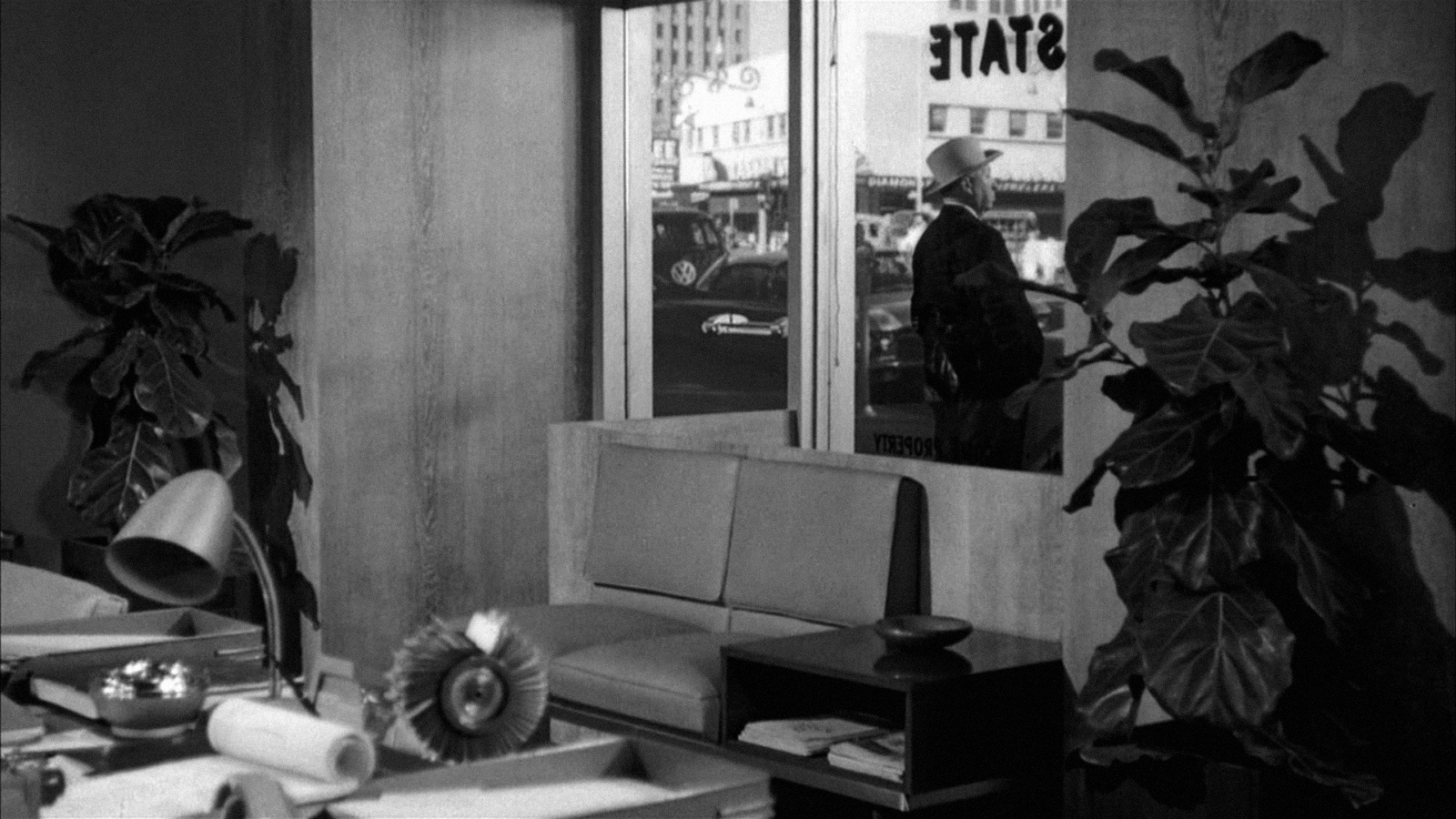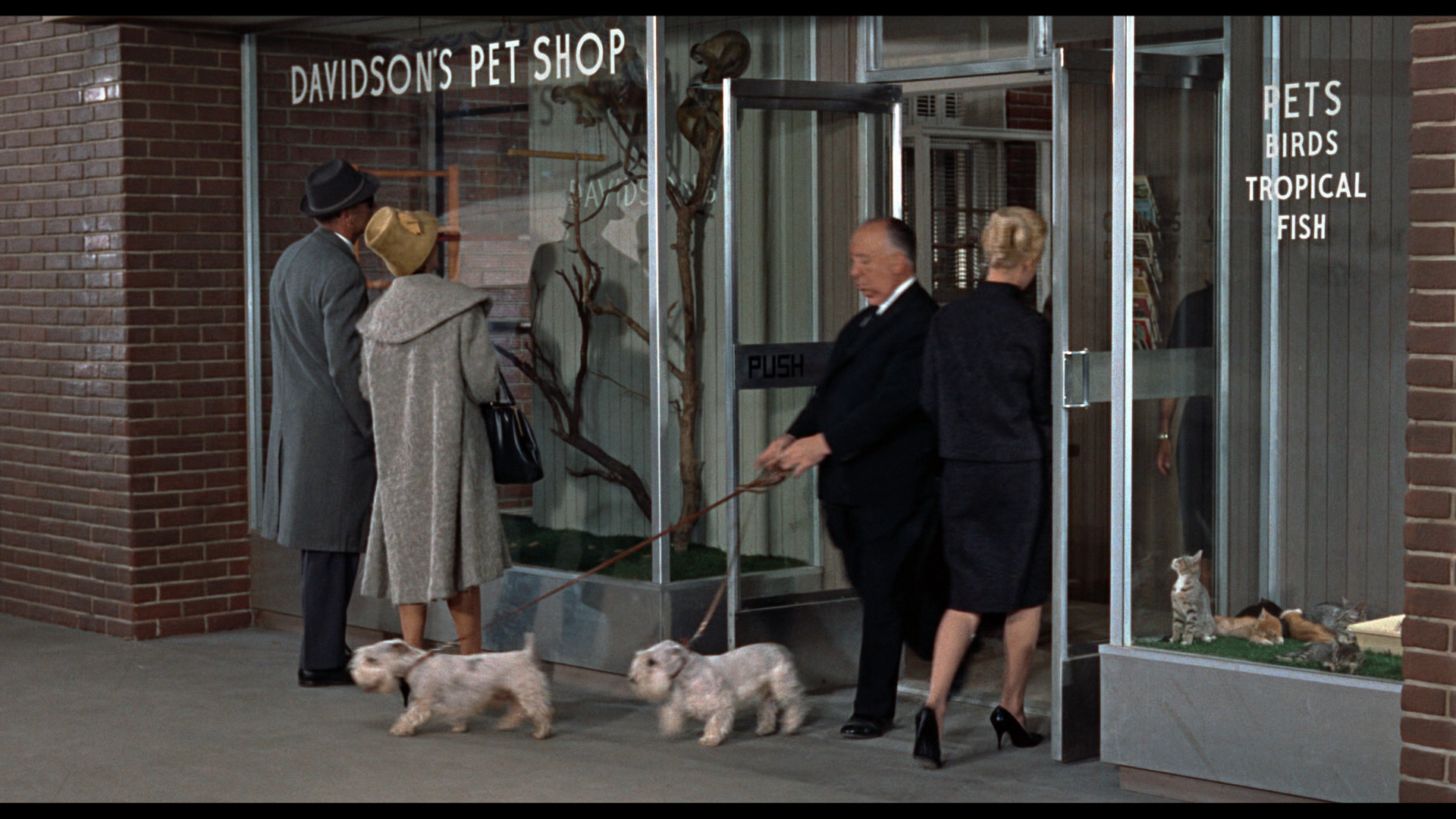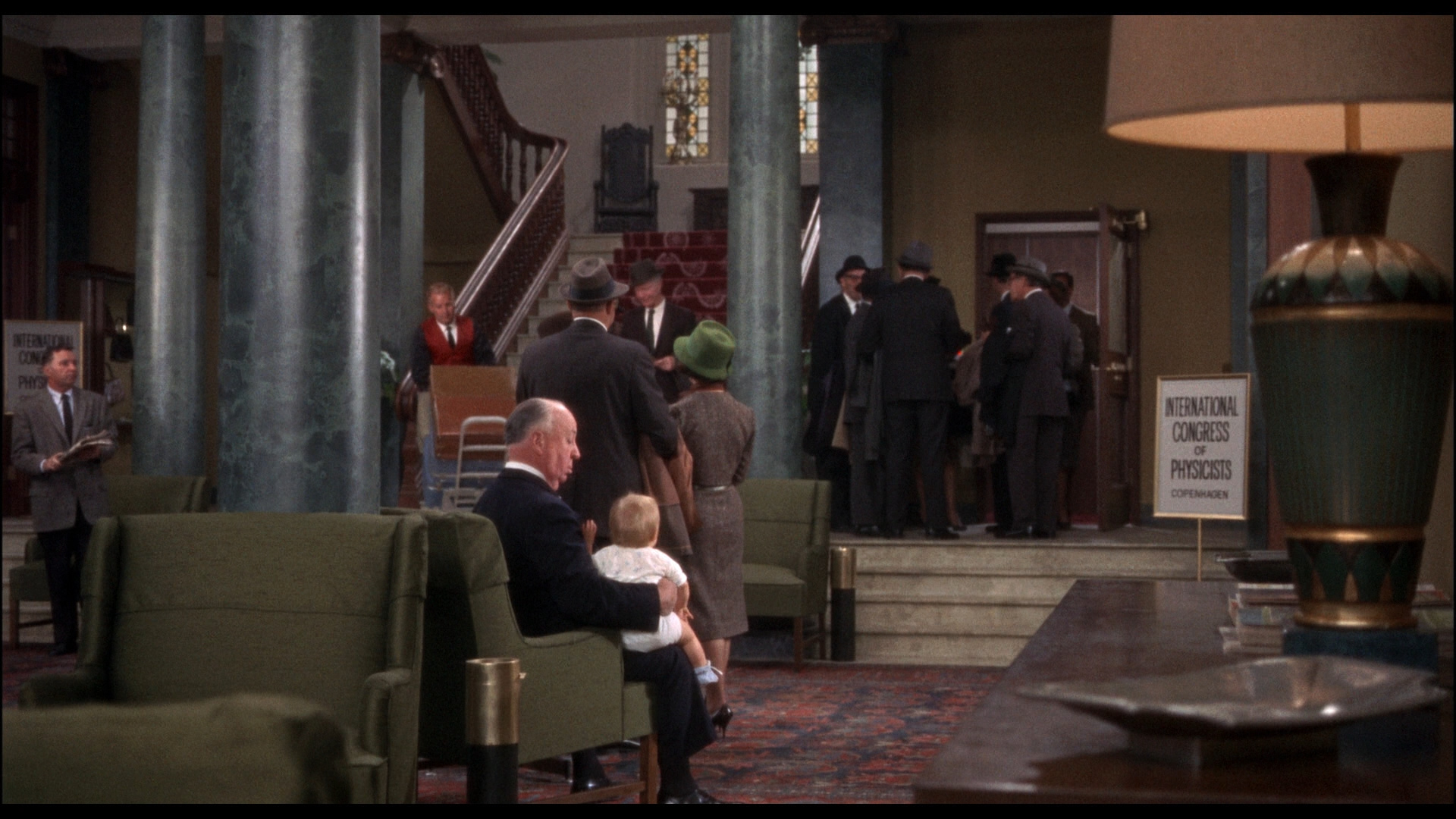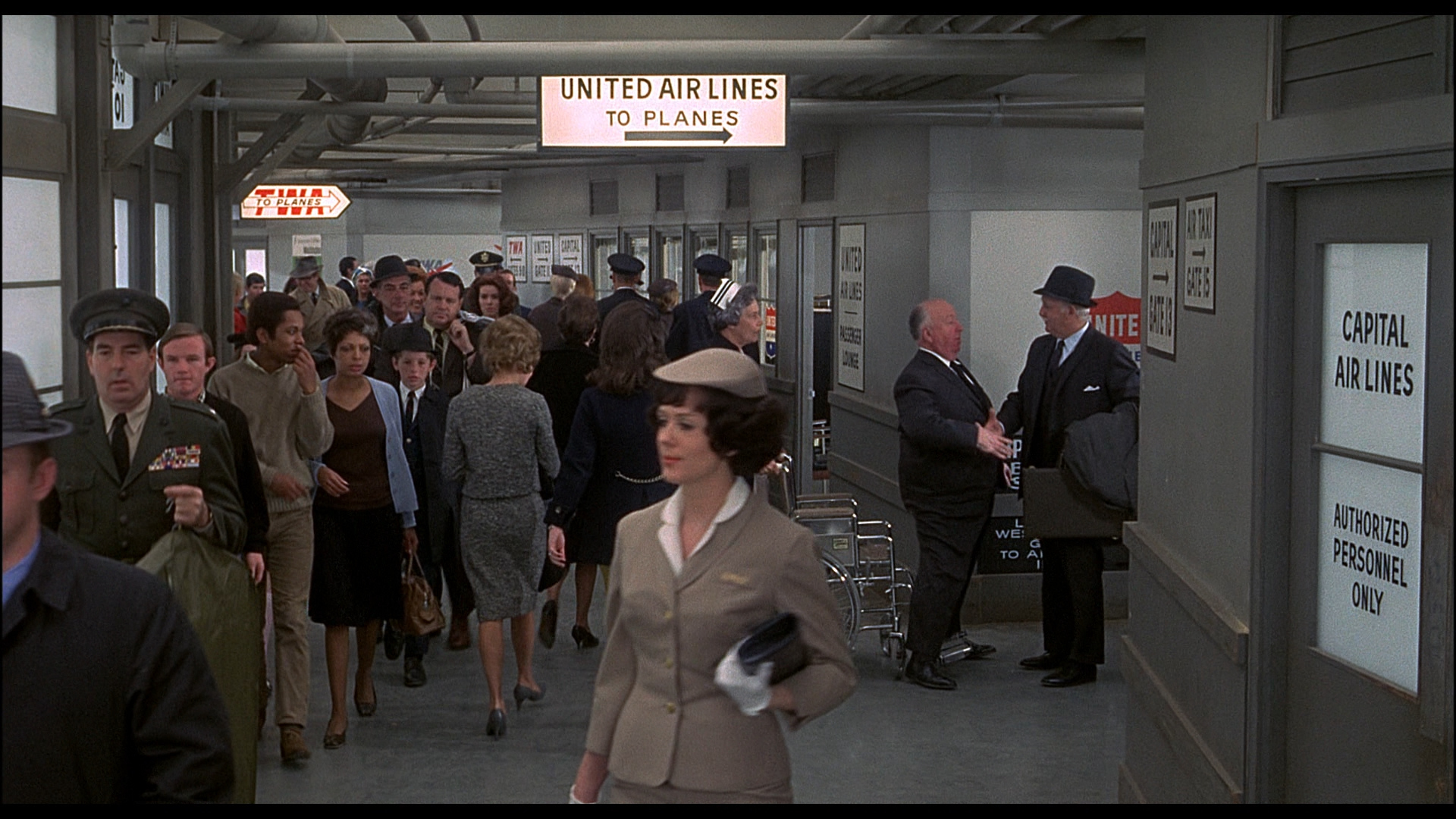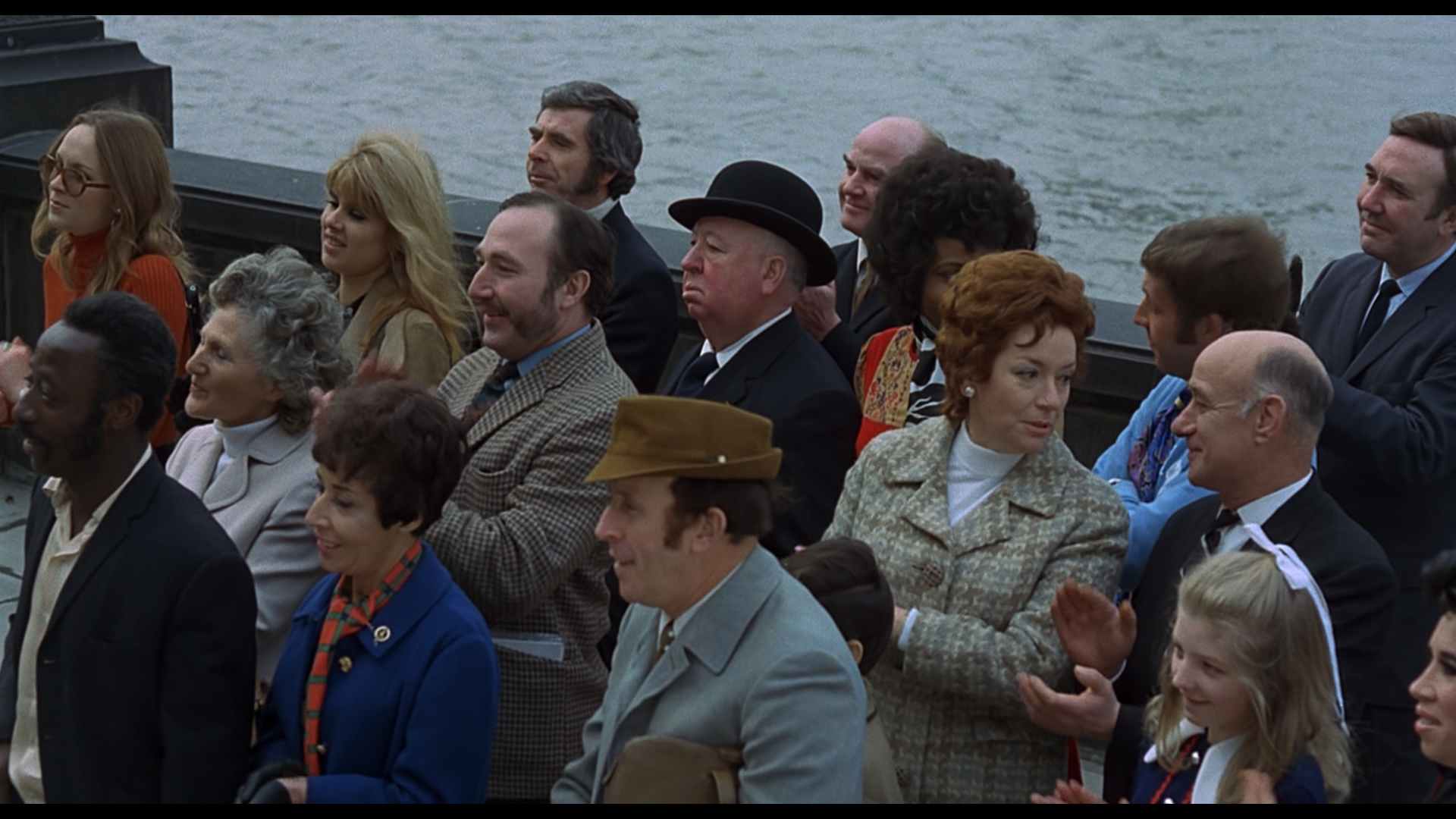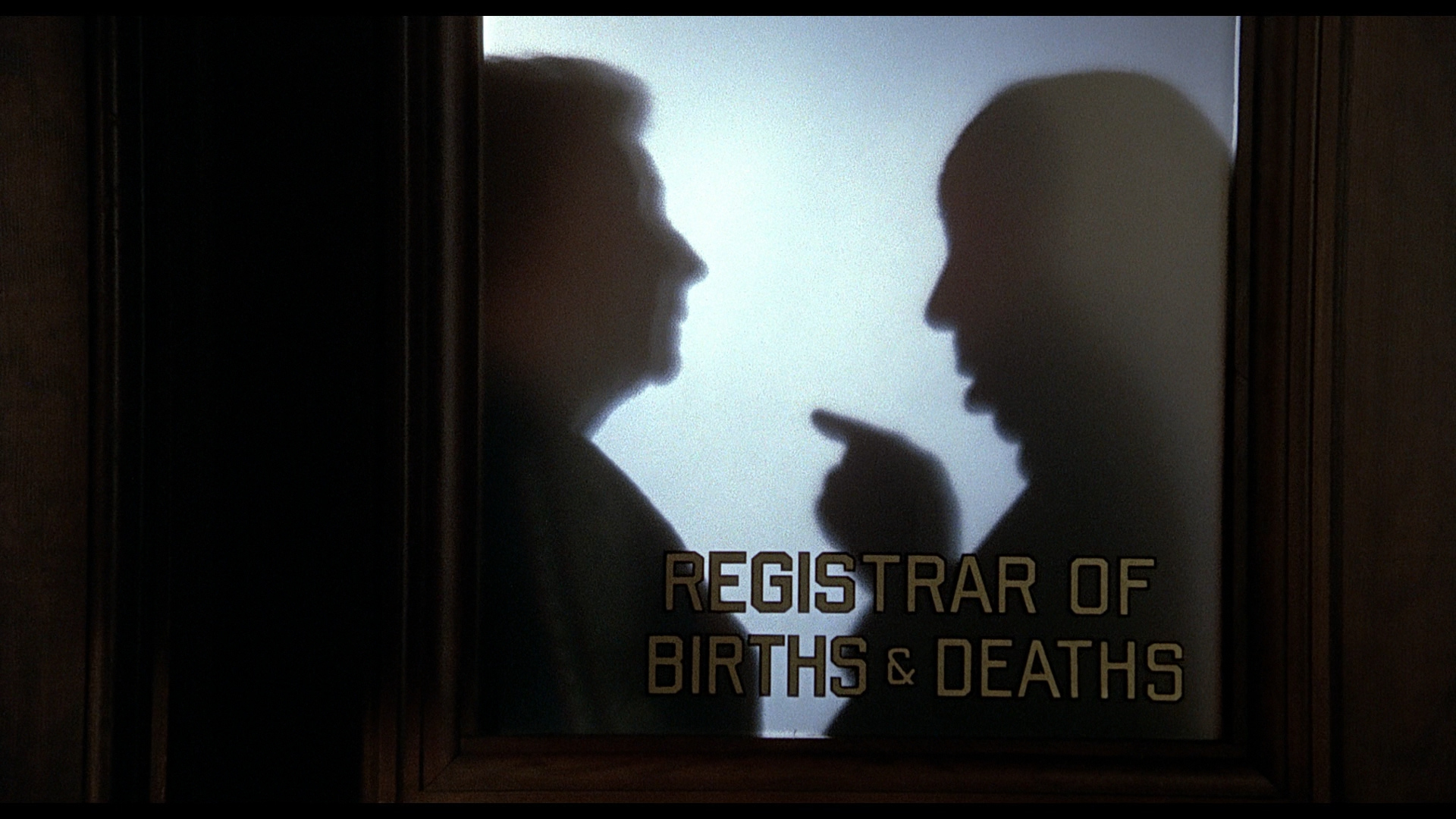The Hitchcock Cameos
The following is a complete list of Hitchcock's known cameo appearances in his films, including a few that might be Hitchcock (these are marked as unconfirmed). The timings shown are approximate and may vary.[1]
The New York Times (28/Oct/1945) included a short illustrated article about Hitchcock's cameo appearances, with the following quote from the director:
It all started with the shortage of extras in my first picture. I was in for a few seconds as an editor with my back to the cameras. It wasn't really much, but I played it to the hilt. Since then I have been trying to get into every one of my pictures. It isn't that I like the business, but it has an impelling fascination that I can't resist. When I do, the cast, grips, and the camera men and everyone else gather to make it as difficult as possible for me. But I can't stop now!
Speaking to François Truffaut in the 1960s, Hitchcock said:
[the first cameo in The Lodger] was strictly utilitarian; we had to fill the screen. Later on it became a superstition and eventually a gag. But by now it's a rather troublesome gag, and I'm very careful to show up in the first five minutes so as to let the people look at the rest of the movie with no further distraction.[2]
The Cameos
1920s
The Lodger: A Story of the London Fog (1927)
- sitting at the newsroom desk, with his back to the camera (5 minutes)
- Alma Reville also has a cameo in the open sequence of the film
Blackmail (1929)
- trying to read a book on the London Underground (11 minutes)
1930s
Murder! (1930)
- walking past the scene of the crime (60 minutes)
Number Seventeen (1932)
- unconfirmed — passenger on the bus
The Man Who Knew Too Much (1934)
- walking across the road as a bus passes by (34 minutes)
The 39 Steps (1935)
- walking past Hannay and Miss Smith, tossing litter away (7 minutes)
Young and Innocent (1937)
- taking a photograph outside the courtroom (16 minutes)
The Lady Vanishes (1938)
- at Victoria Station (93 minutes)
1940s
Rebecca (1940)
- walking behind George Sanders after he uses the telephone (123 minutes)
Foreign Correspondent (1940)
- walking past the hotel, reading a newspaper (12 minutes)
Mr. & Mrs. Smith (1941)
- walking past the hotel (43 minutes)
Suspicion (1941)
- posting a letter at the village post office (47 minutes)
Saboteur (1942)
- standing in front of Cut Rate Drugs (65 minutes)
Shadow of a Doubt (1943)
- playing cards on the train to Santa Rosa (16 minutes)
Lifeboat (1944)
- starring in the newspaper advert for "Reduco" (25 minutes)
Spellbound (1945)
- walking out of the lift at the Empire Hotel (43 minutes)
Notorious (1946)
- drinking champagne at the party (65 minutes)
The Paradine Case (1947)
- carrying a cello at a Cumberland railway station (36 minutes)
Rope (1948)
- Hitchcock's silhouette as a flashing red neon sign in the background (56 minutes)
Under Capricorn (1949)
- in the town square, wearing a hat and coat (13 minutes)
1950s
Stage Fright (1950)
- walking past Eve Gill (Jane Wyman) and giving her a funny look (38 minutes)
Strangers on a Train (1951)
- struggling to get his cello case on board the train (11 minutes)
I Confess (1953)
- walking past in a long shot as part of the opening (2 minutes)
Dial M for Murder (1954)
- staring out from the class re-union photograph (13 minutes)
Rear Window (1954)
- winding a clock in the songwriter's apartment (26 minutes)
To Catch a Thief (1955)
- sitting next to Cary Grant on the bus (10 minutes)
The Trouble with Harry (1955)
- walking past the artist's stall (22 minutes)
The Man Who Knew Too Much (1956)
- stood to the left, watching the acrobats (26 minutes)
The Wrong Man (1956)
- introducing the film (1 minute)
Vertigo (1958)
- walking past the shipyard entrance, carrying a bugle case (11 minutes)
North by Northwest (1959)
- running for the bus, but the bus door closes in his face (2 minutes)
1960s
Psycho (1960)
- standing outside Marion's office, wearing a cowboy hat (6 minutes)
The Birds (1963)
- walking his two pet dogs out of Davidson's Pet Shop (2 minutes)
Marnie (1964)
- watching Marnie leave her hotel room (5 minutes)
Torn Curtain (1966)
- sat in the hotel lobby nursing a young child (8 minutes)
Topaz (1969)
- at the airport, sat in a wheelchair and then standing up to greet a man (34 minutes)
1970s
Frenzy (1972)
- in the crowd and not applauding the speaker at the start of the film (3 minutes)
Family Plot (1976)
- in silhouette behind the door at the registrar of births and deaths (41 minutes)
Non-Cameos
The following are not cameos by Hitchcock...
- The Lodger: A Story of the London Fog (1927) — fat man in the crowd chasing Ivor Novello at the end of the film
- Easy Virtue (1928) — man in suit leaving the tennis court through a side gate (19 minutes)
- Secret Agent (1936) — man walking down ship's gangway (8 minutes)
- Rope (1948) — man walking down street at start of film
- North by Northwest (1959) — dressed in drag as an woman on the train (45 minutes) (more info)
Films Without Cameos
The following are the films in which Hitchcock does not make a known cameo appearance...
- The Pleasure Garden (1925)
- Downhill (1927)
- The Ring (1927)
- The Farmer's Wife (1928)
- Champagne (1928)
- The Manxman (1929)
- Juno and the Paycock (1930)
- The Skin Game (1931)
- Rich and Strange (1931)
- Waltzes from Vienna (1934)
- Secret Agent (1936)
- Sabotage (1936)
- Jamaica Inn (1939)[3]
See Also...
Film Frames
Selection of film frames: Alfred Hitchcock (click image to view larger version or refresh thumbnails)...
Image Gallery
Images from the Hitchcock Gallery (click to view larger versions or search for all relevant images)...
Notes & References
- ↑ For example, PAL DVDs run faster than NTSC DVDs and Hitchcock's silent films vary widely in their transfer speed.
- ↑ Hitchcock (1967) by François Truffaut, chapter 2
- ↑ A short article on the director's planned cameo appearance in Rear Window which appeared in the New York Times (03/Jan/1954) claimed that Hitchcock can be seen as an extra in Jamaica Inn.
